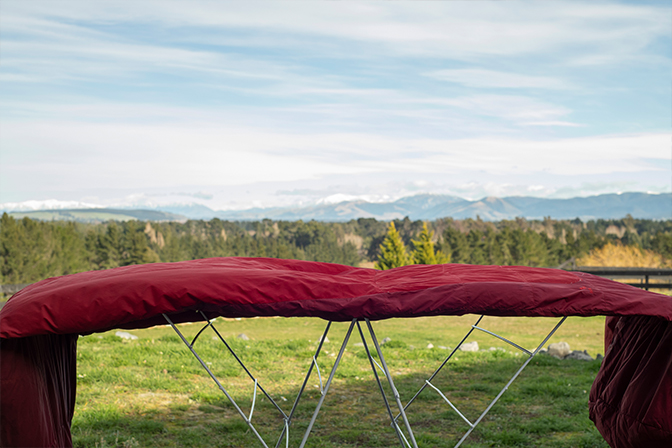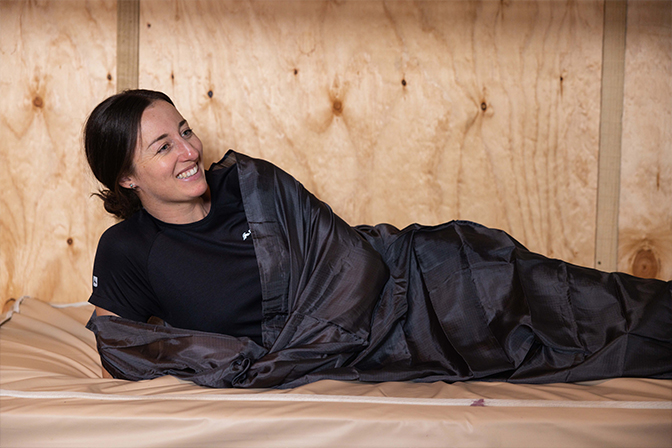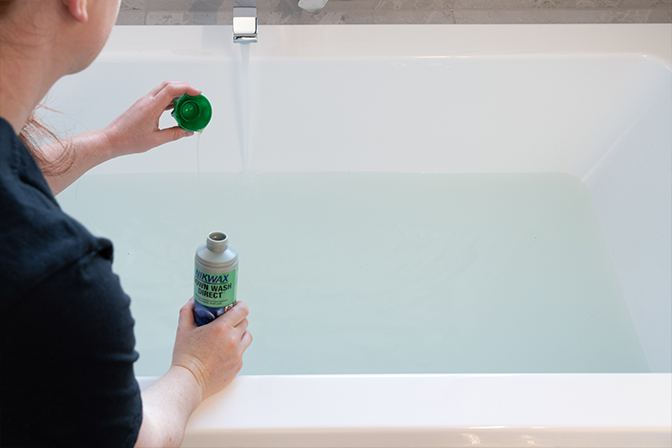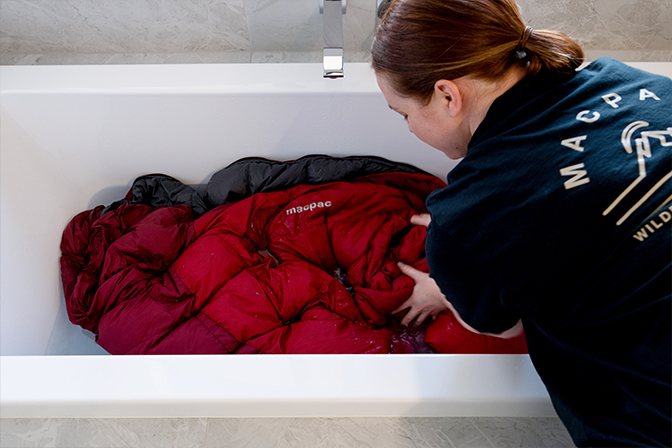
How to wash your sleeping bag
Great sleeping bags aren’t a small investment, and once you’ve got one you love, you’ll want to keep it in play for as long as possible. Keeping your bag clean means it’ll last longer and insulate more efficiently. Luckily, Macpac sleeping bags are durable and easy to care for.
Please note: we recommend only washing your sleeping bag when necessary. It’s better for the environment and for your sleeping bag! Once a year might be a good starting point, depending on how frequently you use it. If you wait too long, dirt and oils may already be making their way down to the feathers, sticking them together and reducing loft. But always check the bag’s care label before washing. To wash your bag, follow the steps below.
To wash your sleeping bag
If possible, try spot cleaning any marks with a clean damp cloth first. If your bag needs a more thorough wash, we recommend hand-washing your sleeping bag in a bath or a tub, using cold water and a non-detergent soap.
If your bag is down, we recommend using a down appropriate soap such as Nikwax Down Wash Direct®, or one that specifically states it’s safe for use on down items. (Standard laundry detergent can lead to clumping or reduced loft, and strip essential oils). For synthetic bags, a product like Nikwax Tech Wash® (a high performance cleaner for wet weather clothing and equipment) will be appropriate.
Rinse your bag several times, then gently press out excess water.
Please note: Washing your sleeping bag in a machine has a higher risk of damaging it. With a down sleeping bag, it could damage the internal baffling and with synthetic bags, there is a higher risk of the insulation pulling apart, so we recommend hand-washing only.
How to dry your sleeping bag
To dry your bag, we recommend drying it flat, over a clothes horse and away from direct sunlight. If you don’t have a clothes horse, you can line-dry it, but try not to do this when the bag is sopping wet, and that the sleeping bag’s weight is evenly distributed when hanging.
Alternatively, you can tumble-dry your sleeping bag, as this helps restore the Durable Water Repellency treatment (DWR) on both the fabric and down. Add a few dryer or tennis balls to the dryer to break up any clumps. Again, be mindful not to tumble-dry your sleeping bag when the down is soaking wet as it will be very heavy and could damage the mesh that separates the baffles. Don’t iron or dry clean your sleeping bag.
Avoid over-exposure to direct sunlight. Finally, make sure your bag is completely dry before storing it.
How to store your sleeping bag
To maintain loft, we recommend storing your sleeping bag uncompressed in a larger mesh bag so the insulation doesn’t get crushed. Macpac down sleeping bags all come with a separate mesh storage sack.


Sleeping bag care tips
Caring for your bag properly during use and between adventures will go a long way to extending your sleeping bag’s life and reduce the frequency with which you need to wash it — a win for your sleeping bag and the environment.
Here are our top tips for taking care of your sleeping bag:
Wear clean clothes when getting in
After a long and tiring hike, sometimes all you want to do is crawl into your sleeping bag and call it a day. Over time dirt and oils from your skin and hair can build up. To minimise this, change into a fresh pair of clothes before you get all snuggly!
Grab a liner
We could write a whole post extolling the virtues of the humble sleeping bag liner, but suffice it to say, it’s a good idea to use one! Sleeping bag liners will protect your bag from dirt, and create a barrier between your body and inside of your bag. A good liner also provides added insulation and warmth to your bag. Soft and smooth on skin, Macpac’s silk sleeping bag liners make sleeping away from home easy.
Air your bag after use
Airing your sleeping bag after use is a good idea to prevent the growth of mould within the insulation fill. Your body creates moisture vapour during the night, and it could get trapped in the insulation of the bag. Moisture could accumulate on the outside of your sleeping bag for a couple of reasons, for example, condensation from your breath and sweat, or the temperature (e.g. a cold night after a hot and humid day). A good airing will allow that moisture to evaporate. As soon as you get the chance, we recommend unzipping your sleeping bag, turning it inside out and hanging it over something (a clothes line or clothes horse) for a short period of time to dry out, before storing.
Finally, storing your bag properly when in use (as we’ve mentioned earlier) will also help extend its life.
Here’s to many more cosy adventures.


